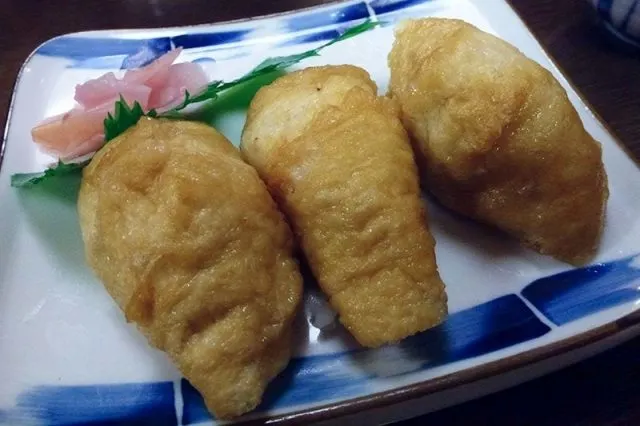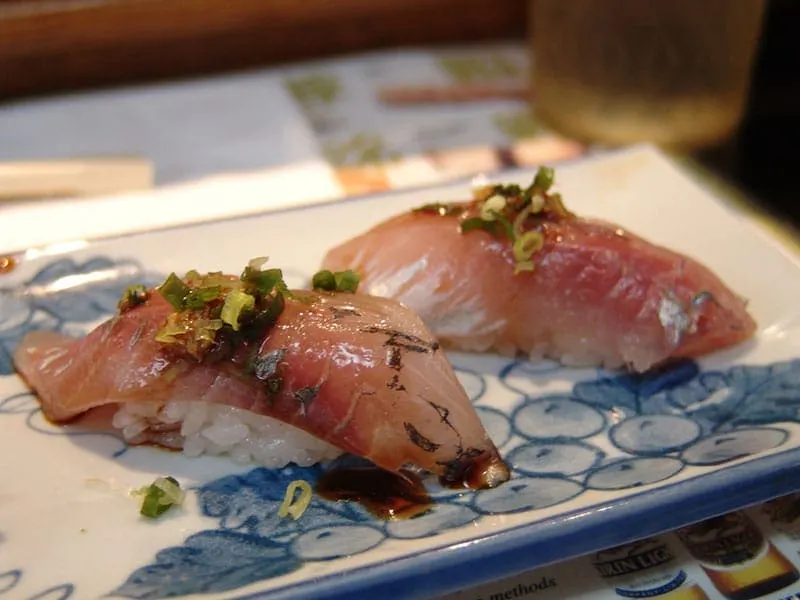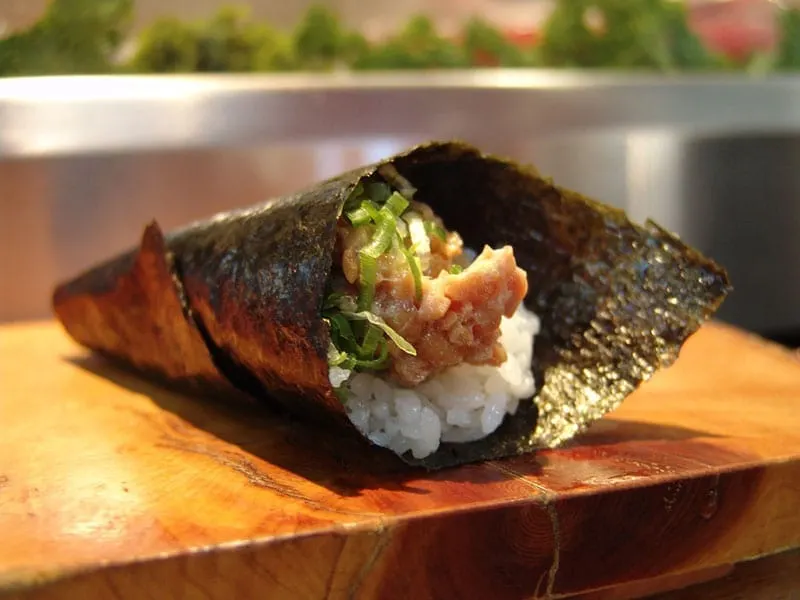We adore Japanese food and nothing beats fresh sushi whether it’s served up near Omi-Cho in the coastal city of Kanazawa or in a tiny sushi restaurant outside Tokyo’s famous fish market. To be honest we’ve had some amazing sushi all across the country. We adore the simplicity and delicate flavours and couldn’t bear to only enjoy it on holiday.
That means not only do we seek out good Japanese cuisine in restaurants and sushi bars in Brisbane and other places we travel but I regularly attempt to recreate dishes that we’ve enjoyed using locally available produce.

When you start with a good supply of fresh seafood you really can’t go wrong but it wasn’t until we started travelling in Japan that I found out just how many styles of sushi there are. It can take 10 years to train as a sushi chef over there and the most renowned sushi masters will tell you that you’ll never graduate, you’ll be learning until you die. Their talent is quite extraordinary not only creating a perfect balance on the plate but selecting and preparing individual pieces to suit the customer in front of them which must be eaten immediately for the best experience.
Sushi is simply the combination of vinegared rice with other ingredients such as fish, vegetables and seaweed. It sounds so simple but it’s so much more than that too. In all its forms sushi is fresh and allows each of its ingredients to shine through which is why it’s so important to source the best produce when you make it at home.
Most of us are familiar with one or more styles of sushi. This article discusses 10 different styles of sushi that are popular in Japan. For each, we’ll look at when it’s most likely to be eaten and how you can adapt it to make a simple version at home. I hope you enjoy it and might be tempted to try a few of our favourites if you haven’t already.
Table of Contents
Popular styles of sushi
Nigiri sushi
This is by far the most common type of sushi served in restaurants in Japan and my personal favourite. It’s very simple so having perfectly seasoned rice and the very freshest ingredients is absolutely essential. With the raw fish, you wouldn’t pack this type into a bento that wasn’t going to be refrigerated. It’s also more likely to lose its shape being transported but at a good sushi restaurant, this is usually what you’ll want to order.
It’s also fairly easy to make at home a version at home if your knife skills are any good or you can buy fresh pre-cut sashimi. Nigiri simply means formed by clasping or clenching so the rice is formed by applying light pressure in one palm and shaping with two fingers of your other hand to create a block of rice. Add a smear of wasabi and layer on the fish or your preferred topping.
The maki or rolled sushi
Outside Japan, the most common form of sushi is a modified form of rolled sushi. In Japan, makizushi or rolled sushi comes in four broad types which relate to how it’s rolled and the likely number of items used in its filling.
Hosomaki Is a thin roll with dried seaweed (nori) on the outside. It likely contains only one or two fillings. This is delicious with a quality cut of tuna or salmon.
Chumaki Is the medium roll, again it is wrapped in nori and might have two or three fillings. Outside Japan, this roll is the most familiar type we see.
Futomaki is a large roll wrapped in nori with a number of different fillings. This is less common, the only time I recall seeing it sold in Japan was the special ehoumaki, a roll with 7 ingredients that are eaten at Setsubun, a festival in early February.
Uramaki is the roll that is inside out, the outside is rice with the nori inside along with the other ingredients. This duck sushi is dusted in shichimi togarashi below is a uramaki.
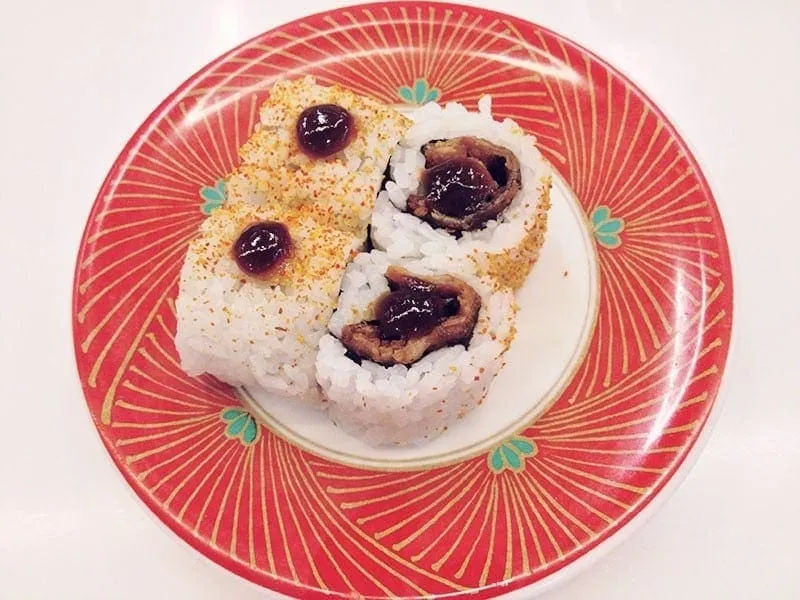
Onigiri
Onigiri is less familiar outside Japan but it’s a very common lunch or snack in your bento box or picked up from the corner store. It’s easy to prepare and many Japanese wives and Mums will prepare them at home with various fillings and coating. Ones with salmon inside are really delicious and sometimes furikake, a Japanese rice seasoning is mixed with the rice before they are formed to add texture and interest.
I love Yaki-onigiri, a version that is brushed with a sticky glaze and grilled. I often make these to eat cold for lunch, they hold together really well for a picnic and are perfectly designed for eating with your fingers.
While it’s impolite in Japan to eat while walking around it’s quite OK to eat sushi with your hands. Even in high-end sushi restaurants, some patrons will choose fingers over chopsticks, it’s perfectly OK.
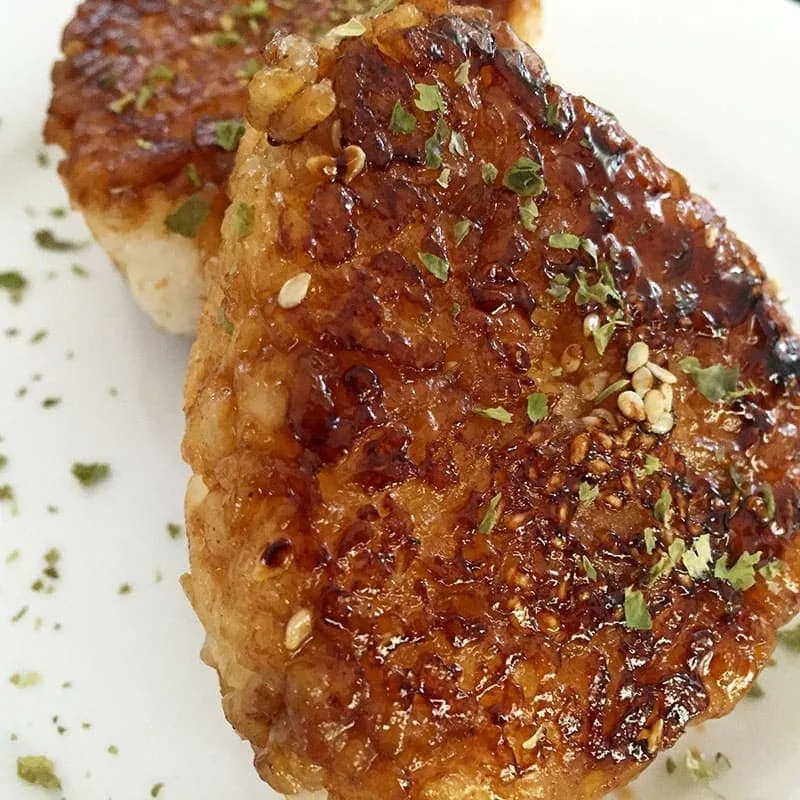
Chirashi sushi
When I first tried scattered sushi it was in a modern hotel restaurant in Hong Kong. I loved the flavour and presentation but assumed incorrectly that it was a style that had evolved in fusion-style restaurants taking the best of East and West. It has in fact been around since the 18th century evolving around the same times as rolled sushi and is a popular family-style dish prepared at home. It’s perhaps best envisioned as a rice salad where the seasoned rice is placed in the bowl and toppings are scattered or placed on top. Unlike a Western rice salad, it isn’t tossed or mixed.
While traditional sushi ingredients including raw fish may be used it’s also made with cooked ingredients including crab, unagi (eel), omelette and vegetables. Some people will add tofu, lotus root or fish cake (kamaboko). Variations seem to be partly regional and partly based on what was available that day. The bowl below was from a restaurant in the canal area of Otaru on Japan’s northern island of Hokkaido. In Otaru, beautiful fresh seafood is plentiful so it’s a great place to enjoy all styles of sushi. The type of chirashi with the raw seafood neatly placed on top is more familiarly known as the Tokyo (Edo) style.
Chirashi sushi is often eaten on Girls Day (March 3rd) but you can enjoy it at any time of the year.

Temari
Temari sushi is ball-shaped sushi and looks beautiful when done well but is a bit fiddly to make compared to other forms. It’s a style more often made at home rather than in restaurants. Again this is something you might make for girls’ day, little girls are bound to love this pretty presentation.
You can top it with anything you want but salmon, tuna, prawn, octopus and omelette are common toppings. It’s also sometimes made more ‘kawaii’ with the use of embellishments.

Temaki
Technically I guess this is a rolled sushi but it’s uncommon in the West while it’s one of the most popular forms served in Japanese families. Like rolled sushi, the nori sheet forms the outer wrapper but in this case, it’s cut in half forming a rectangle rather than a square. Seasoned sushi rice is pressed on the inside, then topped with your choice of fish and vegetables and rolled up like an ice cream cone. Once you get the hang of it it’s really quick and easy and it’s really tasty.
Inari Zushi
I had Inari Zushi for the first time near the Fushimi Inari shrine in Kyoto. It’s named after the Shinto god Inari so has a special affinity with that shrine. I developed a love for it even though I don’t think it looks as visually appealing as many other forms. I’ve not made these myself yet as Inarizushi uses aburaage tofu pockets which are a sweetened seasoned deep-fried tofu skin that can be hard to find here. The pockets I’ve had were stuffed with vinegared rice but you can include other fillings too.
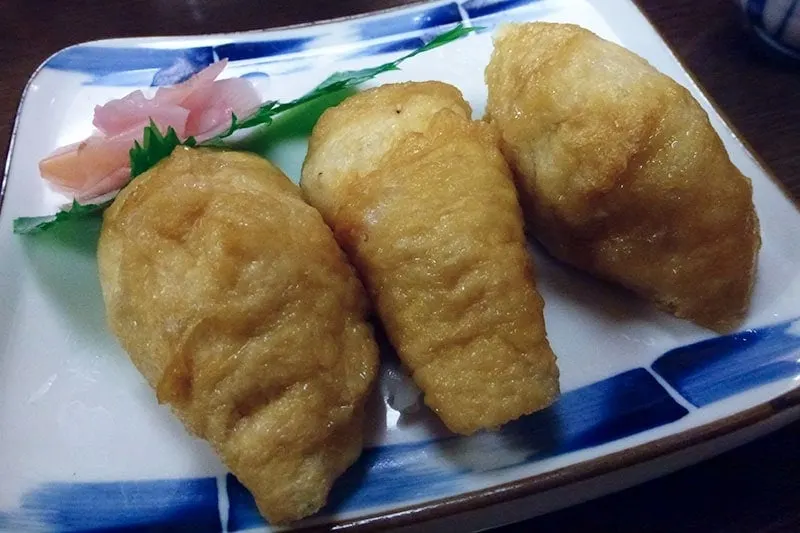
So there you have it, 7 different forms of sushi popular in Japan today, which can in turn be varied in hundreds more ways by the choice of ingredients. It’s by no means an exhaustive list of every sushi available but they’re the ones I like best from those I’ve had the opportunity to try so far.
What styles of sushi do you like best? Is it something you’d have a go at making at home?
These images can be pinned to Pinterest Boards for future reference
Photo credits: Tamaki & Maki styles by Takaokun, Temari zushi by Chotda under creative commons licence CC BY-NC-ND 2.0
